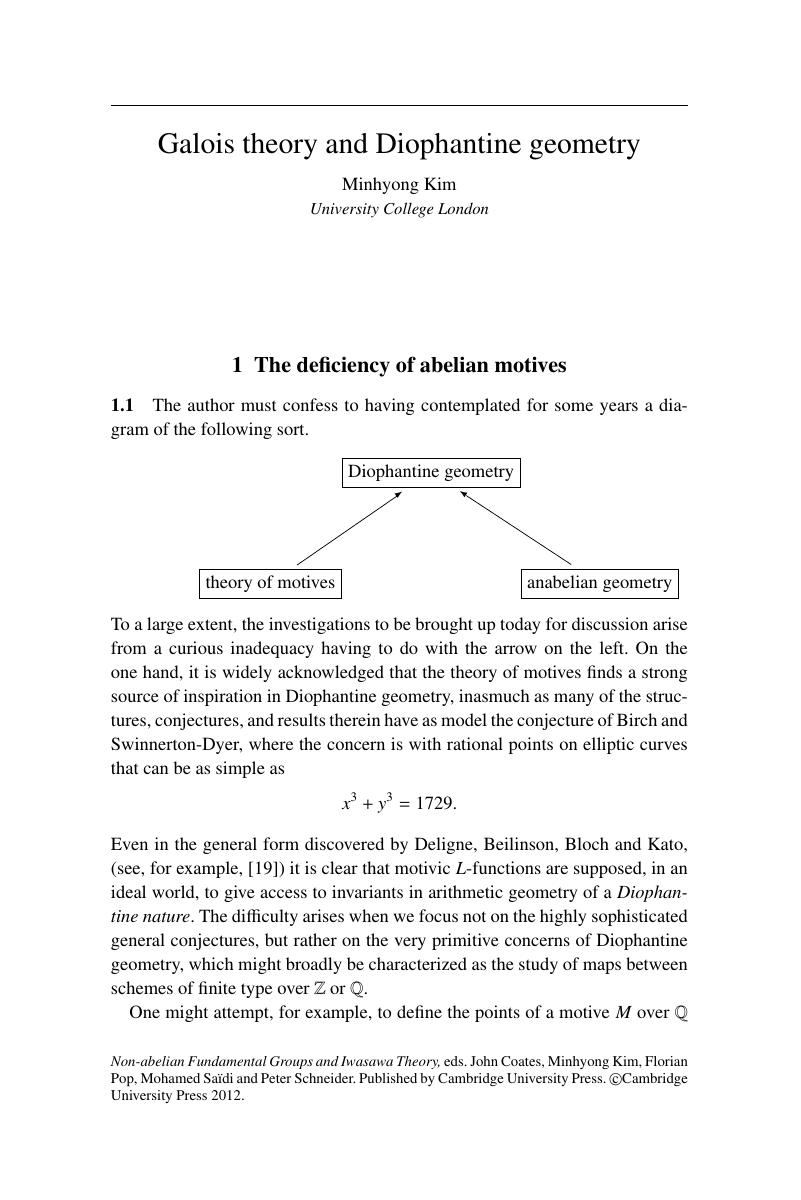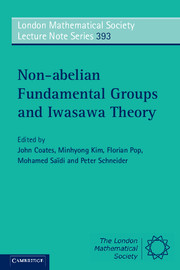Book contents
- Frontmatter
- Contents
- List of contributors
- Preface
- Lectures on anabelian phenomena in geometry and arithmetic
- On Galois rigidity of fundamental groups of algebraic curves
- Around the Grothendieck anabelian section conjecture
- From the classical to the noncommutative Iwasawa theory (for totally real number fields)
- On the MH(G)-conjecture
- Galois theory and Diophantine geometry
- Potential modularity – a survey
- Remarks on some locally ℚp-analytic representations of GL2(F) in the crystalline case
- Completed cohomology – a survey
- Tensor and homotopy criteria for functional equations of ℓ-adic and classical iterated integrals
- References
Galois theory and Diophantine geometry
Published online by Cambridge University Press: 05 January 2012
- Frontmatter
- Contents
- List of contributors
- Preface
- Lectures on anabelian phenomena in geometry and arithmetic
- On Galois rigidity of fundamental groups of algebraic curves
- Around the Grothendieck anabelian section conjecture
- From the classical to the noncommutative Iwasawa theory (for totally real number fields)
- On the MH(G)-conjecture
- Galois theory and Diophantine geometry
- Potential modularity – a survey
- Remarks on some locally ℚp-analytic representations of GL2(F) in the crystalline case
- Completed cohomology – a survey
- Tensor and homotopy criteria for functional equations of ℓ-adic and classical iterated integrals
- References
Summary

- Type
- Chapter
- Information
- Non-abelian Fundamental Groups and Iwasawa Theory , pp. 162 - 187Publisher: Cambridge University PressPrint publication year: 2011
References
- 1
- Cited by



